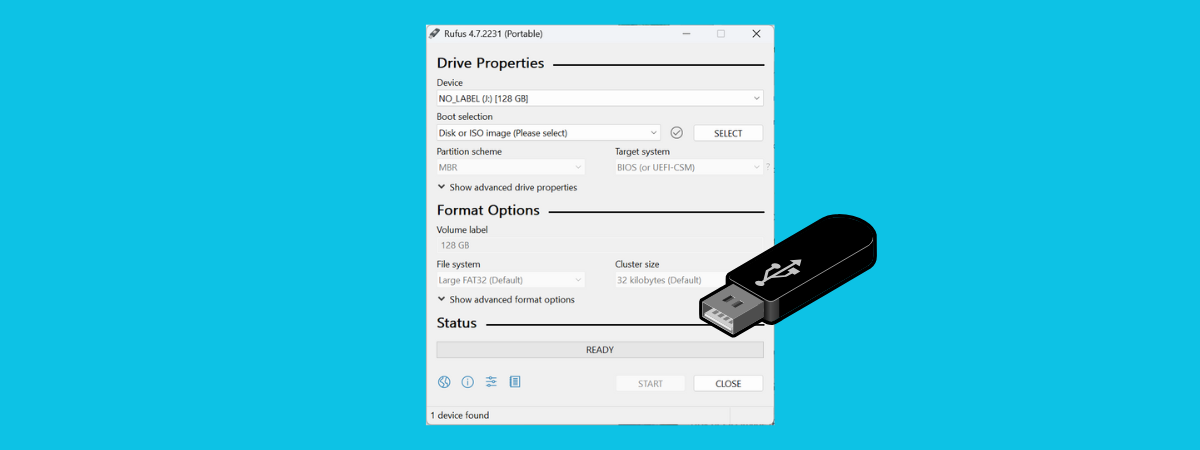How to Spot and Avoid Fake Amazon Driver Text Messages

Scammers worldwide target consumers with fake Amazon driver chat text messages. The scam tricks unsuspecting individuals into sharing personal information or making fraudulent payments.
Unfortunately, because of existing laws, scammers can easily leverage people-finder sites like Intelius, TruthFinder, Instant Checkmate, Spokeo, and WhitePages to create long lists of phone numbers. Once they have these numbers, they send out phishing texts en masse, pretending to be Amazon drivers.
This guide will explain how the Amazon driver chat text scam works and how to protect yourself against it. Learn why people finder sites are dangerous and how best to remove yourself from these databases to avoid having your number targeted by criminals.
What is an Amazon driver chat text scam?
The Amazon driver chat text scam is a phishing scam where scammers impersonate Amazon delivery drivers. To profit from this scam, fraudsters send fake text messages to a large number of people. The message claims that the fake Amazon driver needs you to confirm delivery details or resolve an issue with the order.
The scam is primarily a numbers game. Scammers rely on reaching people who happen to be waiting for an Amazon delivery. When the recipient is waiting for a parcel, they often presume the message is authentic, making it easier for a scammer to defraud them.
Amazon driver text scam messages often contain a malicious link or request personal information such as an address or payment details. If you hand over this data to the scammer, they will use it to engage in fraud.
The aim of delivery scams is to either:
- Steal your personal information for identity theft
- Trick you into making payments under false pretenses.
Delivery scams have a very high success rate. They often result in serious consequences for victims, including financial losses, compromised accounts, identity theft, and malware infections.
How does the Amazon driver chat scam work?
The Amazon driver text scam is basic and relies entirely on the victim being deceived into providing their data or following malicious links.
Scammers typically send unsolicited text messages pretending to be Amazon delivery drivers (or drivers from other delivery companies). The message will usually claim they have an issue with the delivery and will ask the recipient to follow a link or respond by providing information.
If you click on the phishing link in the scam text message, you will be redirected to a fake Amazon page designed to steal your login credentials, personal information, or payment details.
Sometimes, the scammer may ask you to provide sensitive information directly through a text message conversation.
Remember that delivery companies like Amazon will never ask you for personal details or payment information at the delivery stage of a purchase. That is why you must be on red alert for unsolicited scam messages. If you receive an unusual message from a delivery driver, ignore it.
How to spot scams and respond to real Amazon driver messages
You must learn to recognize scam messages to protect yourself against delivery driver scams. Knowing what to look for lets you identify fake messages when you receive them. Knowing how to spot messages will also give you the confidence to ignore them – even if you are expecting a delivery.
Our main advice if you get an unusual text message from a delivery driver is to ignore it unless the driver informs you they are waiting outside your house.
That said, Amazon drivers are allowed to send you genuine messages. If you believe a message is genuine, log into your Amazon account directly in your browser (without clicking the link in a message). That will allow you to check on the status of your delivery and communicate with Amazon.
Delivery scams are becoming extremely common, so ignoring messages and waiting for your delivery is often better. Most importantly, remember that real delivery drivers will never ask you for personal information or payment details because:
- You have already paid
- They already have your address
Log into your Amazon account and chat with the driver
Another piece of advice is to message Amazon drivers inside your Amazon account. So, if you get a message from a lost driver, you can easily message back without texting or following links in the text message.
- To respond to an Amazon driver message safely, follow these steps:
- Log into your Amazon account and go to “Orders” (without following links in text messages).
- Click on the item that is scheduled for delivery.
- You’ll see a little red circle next to “Chat with your driver.” Here, you should receive the same message as you received via SMS text message.
Now, you can safely respond to the message from your Amazon account. If there is no message, that means the text message you received was fake, and you can ignore it.
Common signs of an Amazon driver chat scam
To help you out, we have included a list of things to look out for. These things indicate that a message could be a scam:
1. Unsolicited messages
If you receive a text message about an Amazon delivery you weren’t expecting, it is a scam.
Scammers target individuals at random using a “cold calling” scam. This means you might not expect a delivery when you get the message. If you haven’t made an order, this is a dead giveaway that the message is a scam.
2. Poor grammar and spelling
People who are successfully victimized by delivery driver scams often feel great regret afterward because they were deceived without realizing it.
Scam messages often contain poor grammar, spelling errors, or unusual phrasing. This is because the scammer lives overseas and does not have good English language skills.
If you receive a message that is very poorly written, take note. This could be a sign that the message is fake. That is why you should always listen to your instincts. If you sense something is suspicious or out of place, act accordingly.
3. Urgency or pressure
Scammers always use your emotions against you. They know that people often act on impulse, and by applying pressure, they can get you to make bad decisions in the heat of the moment.
That is why scammers often try to create a false sense of urgency. If you feel pressured to act quickly and without due consideration, take a deep breath, slow down, and consider that it will likely be a scam.
4. Requests for personal information
Legitimate Amazon representatives and drivers will never ask you to provide sensitive information in emails or SMS messages. If you receive a message asking for personal data such as your Social Security number, credit card details, or any other PII, you must ignore it.
If a driver asks you to provide any personal information, including your address, this should always ring alarm bells because the driver should not need anything other than a few directions from close to your home.
Remember, if you believe you have received a real message from an Amazon driver, close the text without responding or clicking the link:
- Launch your browser
- Log in to your Amazon account safely
- Communicate with the driver via the Amazon website.
5. Unusual URLs or email addresses
Always double-check links and email addresses. Scammers often use URLs that look similar to Amazon’s (but have minor differences). These cloned URLs and websites are designed to look like the real thing. This is how they succeed in stealing your login details, allowing hackers to gain access to your Amazon Prime account.
The best advice is never to click any links in text messages. Instead, open a browser and go to Amazon to access your account outside the text message.
6. Requests for payment
Amazon will never ask you to make a payment via unsolicited messages. That means you will never need to provide your bank, card, or gift card information to receive your delivery. These requests are always a scam.
How to protect yourself from the Amazon driver chat scam
To stay safe from Amazon driver chat text scams, follow these steps:
- Verify the source: If you receive a suspicious message, don’t click on any links or provide information. Contact Amazon directly through their official website or app to verify the authenticity of the communication.
- Never share personal information: Avoid sharing personal information like your address, payment details, or login credentials over text or email. Amazon will never ask for these details through unsolicited messages.
- Double-check links and URLs: Before clicking on any link, scrutinize the URL. Scammers often use links that look very similar to legitimate ones, with slight variations that can be easy to miss.
- Keep your contact details private: Use throwaway email addresses or burner phone numbers to protect your contact information. This helps prevent scammers from obtaining your details.
- Use privacy tools to limit exposure: Remove your data from people finder sites and data brokers to prevent your phone number from falling into the hands of scammers. Data brokers collect and sell your personal information, which allows criminals to access your telephone number.
How Incogni can help

Incogni is a privacy tool that protects you against scammers and unsolicited messages. It removes your data from data broker sites like US Search, Instant Checkmate, Intelius, and BeenVerified.
Incogni removes you from180+ people finder sites
With a subscription to Incogni, you can automatically search a list of 180+ different data brokers for your information. If Incogni finds your Social Security number, address, phone number, email address, employment info – or any other Personally Identifiable Information (PII) – it will send a removal request on your behalf.
Incogni provides ongoing monitoring to ensure your data is permanently deleted from people finder databases. It checks every few months, and if it finds your data, it makes another take-down request. This prevents your data from being re-added to databases.
The best thing about Incogni is that it offers a one-year subscription with a 50% discount. This works out at just $7.49 per month, which is cheap considering that it removes you from more than 180 people-finder sites!

An almost impossible job carried out on your behalf
It is estimated that it would take 304 hours to remove yourself from all the data broker databases that Incogni works with. This is a lot of time and effort, especially when data brokers use loopholes to re-add the people who ask to be removed after just six months. That means you will need to spend 608 hours each year making removal requests.
Thankfully, Incogni makes protecting your privacy affordable and convenient. Best of all, it comes with a 30-day money-back guarantee, which means you can try it out yourself to see whether you think it is the right service for you.
Once you have a subscription, you can track the status of your removal requests using your dashboard. We were impressed by how easy it is to monitor removal requests using this dashboard. With Incogni, anybody can streamline their data removal and massively reduce their risk of falling victim to scams without all the hard work.
Read our full Incogni review for more detailed information.
Incogni Coupon
GET 50% off the annual plan
Get Deal >
Discount applied automatically
What to do if you fall victim to an Amazon driver text scam
If you have reason to believe that you have fallen victim to an Amazon driver text scam, you must take immediate steps to protect yourself:
- Secure your Amazon account: Log in to your Amazon account and change your password. We also advise enabling two-factor authentication if you haven’t already done so. This will prevent unauthorized access to your account.
- Scan for malware: Install and use reliable antivirus software to scan your device for malware. If you followed the link in a text message, you could have inadvertently installed malware. You must scan your device and remove any unwanted viruses, malware, and spyware.
- Report the scam to your bank: If you have accidentally provided financial information to a scammer, you must immediately contact your bank to cancel your card or freeze your account.
We also advise that you take the following steps to report the scam to the authorities:
- Federal Trade Commission (FTC): File a complaint with the FTC to help prevent others from becoming victims.
- Better Business Bureau (BBB): To create awareness, notify the BBB about the scam.
- Local Law Enforcement: If you have suffered financial loss, report the incident to your local police department.
- Amazon: Report the scam directly to Amazon through their official website.
FAQs: How to avoid fake Amazon driver text scams
How can I recognize a scam Amazon message?
Always look out for unsolicited messages, poor grammar, requests for personal information, urgency, unusual URLs, or payment requests. These are all common signs of a scam.
What should I do if I receive a suspicious text message from “Amazon”?
Do not click on any links or provide personal information. Instead, contact Amazon directly through their official website or app.
What should I do if I have already fallen for the scam?
Earlier in this guide, we provided information about what to do if you have been victimized by a scam. However, to recap, you should secure your Amazon account, secure your devices against malware, contact your bank, and report the incident to the authorities.
How do scammers get my telephone number?
If you have made your telephone number public on social media accounts, then it is easy for that number to be hoovered up by people finder websites and data aggregation services. This allows hackers to compile huge lists of numbers that they can use in phishing campaigns.
The best solution is to remove your personal information from appearing publicly online and ask to be removed from people finder websites. In addition, be extremely careful of the data you provide to online services and apps. By limiting the data you give them, you will stem the flow of data to online directories.
Source link










